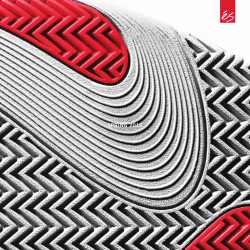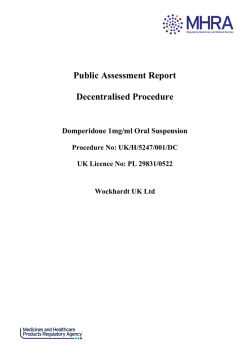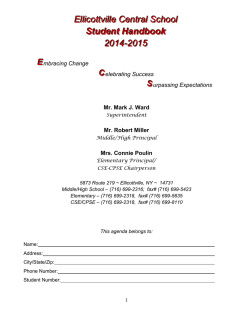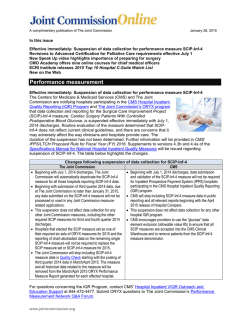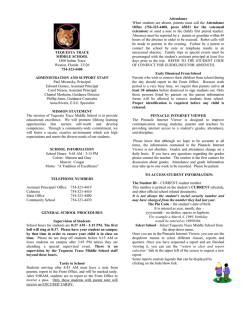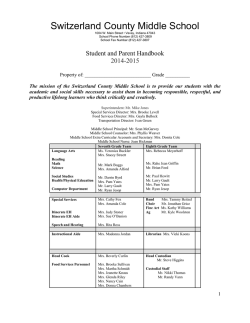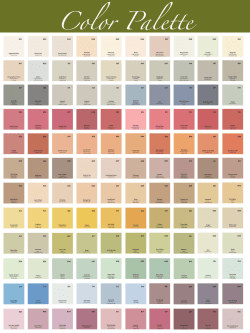
Assessment of the suspending properties of naturally occurring
Available online www.jocpr.com Journal of Chemical and Pharmaceutical Research, 2015, 7(1):870-878 Research Article ISSN : 0975-7384 CODEN(USA) : JCPRC5 Assessment of the suspending properties of naturally occurring Entandrophragma angolense gum in oral sulphamethoxazole suspension Oladapo A. Adetunji and Mosunmola O. Odole Department of Pharmaceutics and Industrial Pharmacy, Faculty of Pharmacy, University of Ibadan, Ibadan, Nigeria _____________________________________________________________________________________________ ABSTRACT The need to reduce costs of pharmaceutical suspensions and consequently enhance affordability has culminated in the search for a pool of naturally occurring excipients that are biodegradable, economically feasible and can also compete with established agents. A study was conducted on the suitability of Entandophragma angolense gum as a suspending agent in oral pharmaceutical suspensions in comparison with official gelatin BP and Acacia gum. The gum was characterized and used in formulating sulphamethoxazole suspensions containing different concentrations (1.0 - 4.0 % w/v) of the gum; comparison was made with similar formulations containing gelatin BP and Acacia gum. Rheological properties, particle size analysis, suspending properties at varying pH values and stability at different temperatures were the assessment criteria for comparing the suspending ability of the polymers. Entandrophragma angolense gum is devoid of alkaloids, but contains carbohydrates, reducing sugars and saponins, which are pointers to its emulsifying properties. At all concentrations employed, the suspending ability of the polymers was found to be in the order: Entandophragma angolense > Acacia gum > Gelatin. The gum, thus, has potential as a suspending agent that can be exploited for use in the pharmaceutical industry. Keywords: Entandophragma angolense, Natural polymers, suspending agents, sulphamethoxazole, particle size. _____________________________________________________________________________________________ INTRODUCTION Many people have difficulty in swallowing solid dosage forms and therefore require the drug to be dispersed in a liquid. If the drug is insoluble or poorly soluble in a suitable solvent, then formulation as a suspension is usually required [1]. A pharmaceutical suspension is a coarse dispersion system in which insoluble solid particles (dispersed phase) are dispersed in a liquid phase (dispersion medium), and like other disperse systems, it is thermodynamically unstable, thus, making it necessary to include in the dosage form, a stabilizer or suspending agent which reduces the rate of settling and permits easy redispersion of any settled particulate matter both by protective colloidal action and by increasing the consistency of the suspending medium [2]. Suspending agents are (i) inorganic materials, (ii) synthetic compounds, or (iii) polysaccharides. Natural gums like Acacia, Tragacanth, Khaya, Karaya and Entandrophragma angolense belong to the latter group. Gum is a widely available, naturally occurring substance obtained from the trunk or branches of specific plants, which has been in use since ancient times. Gums have been described as materials that can be dissolved or dispersed in water to form more or less viscous colloidal dispersion [3]. Plant gums have evoked tremendous interest due to their diverse pharmaceutical applications such as diluents, binders, disintegrants in tablets, thickeners in oral 870 Oladapo A. Adetunji and Mosunmola O. Odole J. Chem. Pharm. Res., 2015, 7(1):870-878 ______________________________________________________________________________ liquids and as protective colloids in suspensions [4, 5]. The use of natural gums has increased in recent times; also due to the advocacy of “green” materials from “green” chemistry and technologies. Natural polymers are biogenic and their biological properties such as cell recognition and interactions, enzymatic degradability, semblance to the extracellular matrix and their chemical flexibility make them materials of choice for drug delivery [6]. Gums are biocompatible, cheap and easily available, thus, making them attractive substitutes for costly semisynthetic and synthetic excipients [7]. The use of natural gums as adjuvants has been reported by several workers [4,8-10]. The increase in demand for natural gums has made it necessary to explore the newer sources of gums to meet the industrial demands [11]. Moreover, most of the natural gums or polymers are generally regarded as safe for oral consumption, thus emphasizing their current use in pharmaceutical dosage forms designed for oral administration [12]. The present work characterized Entandrophragma angolense (Welw) gum (Meliacea) and investigated the suitability of the gum as a suspending agent in oral sulphamethoxazole suspensions. Entandrophragma angolense gum was compared with similar formulations containing gelatin BP and Acacia gum. The suspending potentials of Entandrophragma angolense gum were evaluated using different assessment criteria such as rheological properties, particle size and size distribution, suspending properties at varying pH values and stability at different temperatures. Sulphamethoxasole (BCS Class II drug) was chosen as the model drug because of its low solubility and thus, requires a good suspending agent for easy redispersion when formulated as an oral suspension. EXPERIMENTAL SECTION Materials The materials used include Gelatin powder BP, Acacia gum powder, and Sulphamethoxazole powder BP (BH Chemicals Ltd., Poole ,UK) supplied by Bond Pharmaceuticals Ltd., Aawe, Nigeria. Analytical grade chloroform water (D/S), acetone and ultra-pure deionized water were obtained from the Research Laboratories of the department of Pharmaceutics and Industrial Pharmacy, University of Ibadan, Ibadan, Nigeria. Entandrophragma angolense gum (family: Meliaceae) was obtained from the early morning exudates of the trunk of the tree crop available in the Botanical Gardens of the University of Ibadan, Ibadan, Nigeria, and authenticated at the Forest Herbarium, Ibadan (FHI No: 108883) located in the Forestry Research Institute of Nigeria, Jericho, Ibadan, Nigeria. Collection and purification of gum Entandrophragma angolense gum was collected from the early morning exudates of the excised bark of the gum that was previously sprayed with ethilon (a pentacyclic triterpene) to prevent microbial growth [13]. It was washed with chloroform water double strength and dried in an oven at 50°C for two days. The dry gum was then weighed, blended and soaked with chloroform water double strength for 2 days. A calico cloth was used to squeeze out the mucilage gel. The mucilage was then washed with ethanol followed by diethyl ether, dried in the oven at 50ºC for 2 days, blended into powder and sieved with 120-µm mesh sieve to obtain the powdered gum [14]. The percentage yield of the gum was then calculated. Phytochemical Examination Preliminary tests were performed to confirm the nature of mucilage obtained. The chemical tests that were conducted were to determine the presence of carbohydrates (Molisch’s test), reducing sugars (Fehling’s test), ketones (Selivanoff’s test), alkaloids (Wagner’s and Dragendorff’s tests), saponins, anthraquinones, tannins, glycosides, mucilages and flavonoids. Evaluation of Toxicity Toxicity studies were carried out according to the method reported by Kumar and other workers [14]. Male albino rats weighing 180-200g were divided into two groups comprising of six animals each. The control group received a daily dose of 250mg/kg of Entandrophragma angolense gum suspension in normal saline orally. The other group received a daily dose of 4000mg/kg of Entandrophragma angolense gum suspension in normal saline orally. The animals were observed continuously for behavioral changes for the first 4 hours and then observed for mortality if any for 48 hours. The body weights were recorded for both groups at an interval of 10 days for 30 days. At the end of the 30-day period, hematological parameters were studied in both groups. 871 Oladapo A. Adetunji and Mosunmola O. Odole J. Chem. Pharm. Res., 2015, 7(1):870-878 ______________________________________________________________________________ Preparation of Sulphamethoxazole Suspension Entandrophragma angolense gum powder (500 mg) was triturated with 5.0 g of sulphamethoxazole with a small quantity of ultra-pure deionized water to obtain a 1.0 % w/v suspension. The resulting mixture was transferred into a 50 mL cylinder and made up to 50 mL with ultra-pure deionized water. The procedure was repeated using 1000 mg (2.0 %w/v suspension), 1,500 mg (3.0 %w/v suspension) and 2000 mg (4.0 %w/v suspension) of gum. The procedure was repeated using Acacia and Gelatin powders [15]. EVALUATION OF SUSPENSION Sedimentation Volume Each suspension (50 mL) was stored in a 50 mL measuring cylinder for 7 days at 25 0C. Observations were made every hour for 5 hours and then every 24 hours for 7 days [2]. The sedimentation volume, F (%) was then calculated using the following equation. F = 100Vu/Vo (1) Where Vu is the ultimate volume of sediment and Vo is the original volume of the suspension Flow rate The time required for each suspension sample to flow through a 10 mL pipette was determined and the apparent viscosity, in mL was calculated using the equation Flow rate = Volume of pipette mL Flow time (in secs) (2) Ultra-pure deionized water was used as the control. Viscosity The viscosity (in poise) of the samples was determined at 25 0C, 37 0C, 45 0C, 55 0C and 70 0C using the Brookfield Viscometer, Dr-2x-Pro [14]. Particle Size Analysis After shaking, 5 mL of each sample (which was stored for 24 hours at 25 ºC) was separately transferred into 100 mL cylinder. Ultra-pure deionized water (75 mL) was then added and mixed, 5 mL aliquot was removed at a distance of 5cm below the surface of the mixture at 1, 5, 10, 20 and 30 minutes. This was transferred into an evaporating dish and evaporated to dryness in an oven at 105 ºC and the residue weighed. The particle diameter, d, was then calculated using the Stokes’ equation [14]. d = 18ηh (PS-P0) g t (3) where, h is the distance of fall of the particle in the particle (cm), t is the time (s),η is the viscosity of the dispersion medium (poise), (PS-P0) is the density gradient between the dispersed particles and the liquid, g is the gravitational constant in cm-2. Redispersion Fixed volume of each suspension (25 mL) was kept in similar calibrated tubes, stoppered and stored at 25Cº. At 5day intervals, one tube of each sample was removed and shaken vigorously to redistribute the sediment and the presence of deposits if any was recorded. Determinations of pH At the end of each 5-day interval, the pH of the sample was measured after the observation of the ease of dispersion has been made. 872 Oladapo A. Adetunji and Mosunmola O. Odole J. Chem. Pharm. Res., 2015, 7(1):870-878 ______________________________________________________________________________ RESULTS AND DISCUSSION The percentage yield of the dry gum obtained from exudates of the excised trunks of Entandrophragma angolense tree was 41.46 %w/w. The high value of the Entandrophragma angolense gum obtained after the purification exercise is as a result of the time of collection of the gummy exudates, which was done early in the morning. This was also observed by Bellal and other workers when they documented the difference in yield of Acacia gum due to the time of collection [16] This high yield further establishes the potential for the use of the gum in the pharmaceutical industry. One of the properties of a good suspending agent is to ensure homogeneity, for at least the period between shaking the container and removing the required dose [1, 14]; this property was observed in the results of the physicochemical (Table 1) and phytochemical (Table 2) analysis of the gum. The results presented revealed Entandrophragma angolense gum to be slightly acidic with a bulk density of 0.61g/mL. Enhanced solubility and swelling capacity in water were obtained at elevated temperatures while the gum is devoid of reducing sugars, ketones, alkaloids, starch, saponins, tannins and flavonoids A violet ring was formed at the junction of the liquids on reaction with Molisch’s reagent as a confirmation of the presence of carbohydrates. Treatment of the solution of the gum with ruthenium red showed a red colour confirming the gum has mucilaginous properties. Entandrophragma angolense gum also has the ability to swell in water. The safety profile of the gum was confirmed from results of the toxicity tests as there were no behavioural changes observed for the first 4 hours and no mortality was observed after 48 hours of feeding the rats with the mucilage. There were no significant differences in the weights of the rats in both groups after observation for a 30-day period. The effect of the mucilage on haematological parameters (Table 3) also indicated that were no significant differences in the parameters between the rats treated with the mucilage and the control. In traditional medicine, Entandrophragma angolense gum has been used by pulping with the seeds of melegueta pepper (Aframomum melegueta) as a febrifuge drink, thus further emphasizing the safety of the gum when consumed orally [17]. The sedimentation volume gives a qualitative account of flocculation (F). As the value of F, which ranges from nearly zero to greater than one, increases, the volume of suspension that appears to be occupied by sediment increases. Thus, if F can be made to approach unity, the product becomes more acceptable since the volume of supernatant in the suspension is being progressively reduced, and consequently, caking is eradicated [18] The values of the sedimentation volume of sulphamethoxazole suspensions containing different concentrations of the gums as suspending agents for day 1 and the subsequent days (days 2 to 7) for suspensions containing 1% w/v gum are presented in Table 4 and Figure 1 respectively. The profile shows an increase in concentration of the suspending agents led to an increase in sedimentation volume with Entandrophragma angolense gum manifesting superiority over gelatin and Acacia. At a concentration of 2%w/v, Entandrophragma angolense gum was able to achieve similar sedimentation profile when compared with official Gelatin at a concentration of 4%w/v. Only Entandrophragma angolense gum behaved as an ideal suspension on day 1 where F approached unity after 3 hours at 2.0% w/v concentration, after 5 hours at 3.0%w/v concentration and after 7 hours at 4.0%w/v concentration. Generally, sedimentation volume reduced with time of storage over a period of 7 days for all suspending agents used. It was observed that Entandrophragma angolense had the least sedimentation rate while Acacia gum had the highest sedimentation rate and settled most rapidly, hence the suspendability of the agents as evaluated by the sedimentation volume were in the order of Entandrophragma angolense > Gelatin > Acacia. The velocity of a medium decreases as the medium comes closer to the boundary wall of the vessel through which it is flowing. However, as a result of the “cohesive force between the wall and the flowing layers” and inter-molecular cohesive forces (viscosity), there is a stationary layer attached to the wall, hence viscosity is the opposing force to flow. Ideally, increase in viscosity of the medium should lead to a decrease in flow rate [2]. An increase in the concentration of the experimental formulations resulted in a decrease in flow rate and a subsequent increase in viscosity. The results revealed that suspensions containing acacia gum flowed fastest and were the least viscous, while Entandrophragma angolense -containing suspensions exhibited the highest viscosity profile. At a concentration greater than 2.0%w/v, the flow rate and viscosity for the formulations containing Entandrophragma angolense were experimentally indeterminable because of the thickness of the formulations. It was also observed that there was an inverse relationship between temperature and viscosity of the polymers (4%w/v) as shown in Figure 2, with Entandrophragma angolense gum showing the highest viscosity at all the temperatures at which observations were made. Particle size analysis was observed to be in the rank order of Acacia > Entandrophragma angolense > Gelatin. 873 Oladapo A. Adetunji and Mosunmola O. Odole J. Chem. Pharm. Res., 2015, 7(1):870-878 ______________________________________________________________________________ Table 1: Physicochemical Composition of Entandrophragma angolense Gum (Mean± SD, n = 4) Parameters Swelling capacity in water at 270C (%) Swelling capacity in water at 800C (%) Solubility in water at 270C (%) Solubility in water at 800C (%) Loss on drying (%w/w) Total ash (%w/w) Acid insoluble ash (%w/w) pH of 1% solution at 320C Bulk density (gm/mL) Tapped density (gm/mL) Hausner’s quotient Compressibility index (%) Angle of repose Moisture content Entandrophragma angolense 51.3±0.01 82.7±0.02 38±0.01 53±0.01 0.1±0.01 1.26±0.04 0.1±0.02 4.27±1.08 0.61±0.03 0.72±0.04 1.18±0.03 15.28±0.04 12.53±2.02 9.2±0.01 Table 2: Phytochemical screening of Entandrophragma angolense gum (+: Present, -: Absent) Tests Test for Carbohydrates (Molisch’s test) Test for reducing sugars (Fehling’s test) Test for ketones (Selivanoff’s test) Test for alkaloids (Wagner’s and Dragendorff’s tests) Test for saponins Test for anthraquinones Test for Tannins (Ferric Chloride test) Test for glycosides (Keller-Killiani test) Test for mucilage (Ruthenium red test) Test for flavonoids (Shinoda test) Mounting in 95% alcohol Mounting in iodine Observation + + Transparent angular masses seen under the microscope Colour of iodine retained (no blue coloured particles seen (starch is absent) Table 3: Hematological values of male albino rats receiving the mucilage of Entandrophragma angolense for 30 days (Mean± SD, n = 4) Parameters RBC (x 106 cells/mm3) WBC (x 106 cells/mm3) Hemoglobin (g/dl) Platelet ( x 103 cells/mm3) Neutrophil (%) Eosinophil (%) Lymphocytes (%) Monocyte (%) Basophil (%) Hematocrit (%) MCV (µm3/red cell) MCH (pg/red cell ) MCHC (g/dl/red cell) Mucilage treated 9.67±0.18 5.03±0.39 17.11±0.04 961±0.16 19.04±0.11 1.77±0.25 62.31±0.41 11.68±0.05 4.59±0.32 51.22±0.41 59.64±0.27 21.05±0.04 31.86±0.08 874 Control 9.61±0.06 5.01±0.16 17.05±0.22 957±0.03 18.96±0.45 1.73±0.15 62.27±0.22 11.36±0.04 4.47±0.14 51.19±0.07 58.96±0.05 21.03±0.06 31.77±0.11 Oladapo A. Adetunji and Mosunmola O. Odole J. Chem. Pharm. Res., 2015, 7(1):870-878 ______________________________________________________________________________ Figure 1: Sedimentation profile of suspensions containing 1%w/v gum ENTA: Entandrophragma angolense gum Table 4: Values of sedimentation volume (%) of sulphamethoxazole suspensions containing different concentrations of suspending agents obtained on day 1 Suspending Agents ENTA Acacia Gelatin Sedimentation volume (%) Time (hours) 0 1 2 3 4 5 0 100 36 34 33 33 33 1.0 100 100 100 98 98 98 2.0 100 100 100 100 98 98 3.0 100 100 100 100 100 100 4.0 100 100 100 100 100 100 1.0 100 51 50 40 40 36 2.0 100 61 51 46 44 38 3.0 100 66 62 50 48 46 4.0 100 68 64 58 52 46 1.0 100 81 56 49 38 30 2.0 100 91 81 70 61 51 3.0 100 95 81 70 61 58 4.0 100 99 82 71 66 64 ENTA: Entandrophragma angolense gum Concentration (%w/v) 875 6 33 96 98 98 100 31 32 40 44 28 47 49 62 7 33 96 96 98 100 31 32 37 44 28 46 48 58 Oladapo A. Adetunji and Mosunmola O. Odole J. Chem. Pharm. Res., 2015, 7(1):870-878 ______________________________________________________________________________ Table 5: Effects of the type and concentration of suspending agents on the flow rate and viscosity of sulphamethoxazole suspensions determined at 250C Suspending agent ENTA Acacia Gelatin Concentration (%w/v) -1 Flow rate (mLs ) 1.0 1.68 2.0 1.57 3.0 Too viscous 4.0 Too viscous 1.0 1.76 2.0 1.71 3.0 1.52 4.0 0.92 1.0 1.97 2.0 1.82 3.0 1.58 4.0 1.43 ENTA: Entandrophragma angolense gum Viscosity (Poise) 1.94 2.36 Indeterminable Indeterminable 0.15 0.17 0.18 0.25 0.11 0.14 0.15 0.19 Figure 2: Plot of Viscosity (Poise) against temperature for suspensions containing 4%w/v gums 876 Oladapo A. Adetunji and Mosunmola O. Odole J. Chem. Pharm. Res., 2015, 7(1):870-878 ______________________________________________________________________________ Values of the particle diameter obtained from the particle size measurements using are presented in Table 6. According to Stoke’s equation, sedimentation velocity (v) is directly proportional to the square of the diameter of the particle [2]. The rate of fall of suspending particles in a vehicle of given density is greater for larger particles than it is for smaller particles [18, 19]. Particle size diameter (d) is inversely proportional to the time of storage; hence, increase in storage time of the suspensions should result in a decrease in particle size/diameter. From the results obtained, there was a direct relationship between increasing the concentration of the gums and particle size [20]. On the other hand, increase in storage time resulted in a gradual decrease in particle diameter as determined from the particle size analysis carried out. Hence, particle diameter of a suspension is directly proportional to the concentration of the suspension while time of storage of suspension is inversely proportional to particle diameter. It was observed that suspensions containing gelatin gum had the largest particle diameter while Acacia-containing formulations had the least particle diameter. Table 6: Values of Particle diameter obtained from the particle size measurements Suspending agent ENTA Acacia Gelatin Concentration (%w/v) Particle diameter (µm) Time (minutes) 1 5 10 20 1.0 1.171 1.144 1.211 0.725 2.0 1.226 1.182 0.902 0.553 3.0 1.234 1.224 1.142 0.724 4.0 1.251 1.234 1.211 1.161 1.0 1.179 1.178 1.178 1.175 2.0 1.211 1.211 1.208 1.201 3.0 1.322 1.312 1.296 1.291 4.0 1.393 1.391 1.390 1.383 1.0 1.602 1.588 1.455 1.301 2.0 1.808 1.762 1.618 1.711 3.0 1.986 1.901 1.798 1.661 4.0 1.991 1.888 1.801 1.601 ENTA: Entandrophragma angolense gum 30 0.525 0.321 0.420 1.122 1.175 1.198 1.282 1.381 0.889 0.911 1.433 1.223 CONCLUSION Entandrophragma angolense gum is devoid of toxic properties and has the potential of a suspending agent at low concentrations and can thus be used as a pharmaceutical adjuvant. The gum obtained from Entandrophragma angolense can be a cheaper alternative to Acacia and gelatin gum because of its availability all year round, and because of the economic advantage of affordability in terms of cost. Acknowledgements This research received support from the Academic Staff Union of Nigeria Universities (ASUU) Research grant. The authors are grateful to Bond Chemicals Limited, Aawe, Nigeria for providing Gelatin BP, Acacia gum and Sulphamethoxazole powders, and to Dr Oluwasanmi O. Aina of the Faculty of Veterinary Medicine, University of Ibadan, Nigeria for technical support. REFERENCES [1] MR Billany. Pharmaceutics, The Science of Dosage Form Design, ELBS Edition, Churchhill Livingstone, United Kingdom, 1993; 270 [2] PJ Sinko.: Martin’s Physical Pharmacy and Pharmaceutical Sciences, 6th Edition, Wolters Kluwer/Lippincott Williams & Wilkins, New York, 2011; 410-441. [3] J Uzeala. The Useful Plants of West Africa. 2nd Edition, Royal Botanical Gardens, United Kingdom, 1988; 173185 [4] OA Bamiro, VR Sinha, R Kumar, OA Odeku. Archives of Pharmaceutical Science 2010, 52: 254-262. [5] WC Evans. Trease and Evans’ Pharmacognosy, 15th ELBS Edition. Saunders, Elsevier Limited, United Kingdom, 2004; 135-150. [6] NC Ngwuluka , NA Ochekpe, OI Aruoma . Polymers, 2014, 6, 1312-1332. [7] JL Zatz, GP Kushla. Pharmaceutical dosage forms-Disperse systems, Marcel Dekker Inc., New York, 1989; 2: 508. 877 Oladapo A. Adetunji and Mosunmola O. Odole J. Chem. Pharm. Res., 2015, 7(1):870-878 ______________________________________________________________________________ [8] K Gowthamarajan, GT Kulkarni, A Muthukumar, N Mahadevan, MK Samanta, B. Suresh. Int. J. Pharm. Expt., 2002, 3:16-19. [9] OA Odeku, JT Fell. J. Pharm and Pharmacol.,2004, 56 (11): 1365-1370. [10] NC Ngwuluka, J Kyari, J Taplong, OJ Uwaezuoke. Pharmaceutics 2012, 4, 354–365. [11] NC Ngwuluka, M Akanbi, I Agboyo, OJ Uwaezuoke. West Afr. J. Pharm Res., 2012, 1, 909–924. [12] MK Senepati, A Srinatha, JK Pandit. Indian J.Pharm Sci., 2006, 68, 824-826. [13] J Glinski, KL Branly. Protecting plants against fungus attack by applying to exposed plant surfacesa carrier and pentacyclic triterpene compound. US Patent , 2001, US6303589 B1 (US 09/207,406) [14] R Kumar, MB Patil, RP Sachin, SP Mahesh. Int. J. PharmTech Res.,, 2009, 1(3), 658-665. [15] AC Amit,SP Sushilkumar, A Shajahan ,S. Gaurav . AAPS PharmSciTech., 2008, 9(1): 197–204 [16] ME Bellal, EA Siddig, MA Elfadi, O.Luukkanen. J. Arid Env., 2005, 63(2) :379-389 [17] A. Sofowora, Medicinal Plants and Traditional Medicine in Africa, 2nd Edition, Spectrum Books Ltd., Nigeria, .1993; 134-156. [18] MN Femi-Oyewo, MO Adedokun, TO Olusoga. Tropical J. Pharm Res., 2004, 3, 279-284. [19] HH Alur, SI Pather, AK Mitra, TP Johnston, T. P.. Pharm Dev Tech., 1999, 4:347-358. [20] OA Adetunji, MA Odeniyi, OA Itiola. East and Cent. Afr. J. Pharm Sc.,2012, 15, 69-76 878
© Copyright 2025

